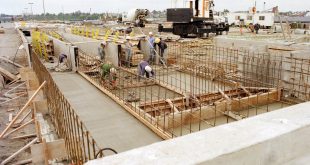The Software as a Service (SaaS) model has revolutionized how businesses deliver and consume software. Unlike traditional software that requires installation and maintenance on local devices, SaaS applications are hosted in the cloud, providing users with on-demand access from any device with internet connectivity. As the SaaS market continues to grow, understanding the SaaS development life cycle becomes crucial for businesses looking to create successful products. This article provides a comprehensive overview of the SaaS product development lifecycle, emphasizing key stages, methodologies like Agile, and best practices.
What is the SaaS Development Life Cycle?
The SaaS development life cycle refers to the series of phases that a saas software development life cycle goes through from conception to deployment and beyond. It encompasses all activities related to developing, testing, deploying, and maintaining a SaaS application. Understanding this life cycle helps organizations streamline their development processes, manage resources efficiently, and deliver high-quality products to users.
Key Stages of the SaaS Development Life Cycle
- Ideation and Market Research
The first stage in the SaaS development life cycle involves brainstorming and researching potential product ideas. This phase is critical for identifying market gaps and user needs.
- User Interviews: Engaging with potential users to gather insights on their pain points and requirements.
- Competitor Analysis: Examining existing solutions to determine areas for differentiation.
- Market Trends: Understanding industry trends to align product development with future demands.
- Planning and Requirements Gathering
Once a viable idea is identified, the next step is to develop a comprehensive project plan. This involves gathering functional and non-functional requirements and defining project goals.
- User Stories: Creating detailed user stories that capture functional requirements from the user’s perspective.
- Technical Specifications: Outlining the technical requirements, including software architecture, technologies, and platforms to be used.
- Roadmapping: Developing a product roadmap that outlines key milestones, timelines, and deliverables.
- Design
The design phase focuses on creating the user experience (UX) and user interface (UI) for the SaaS application. This phase is crucial for ensuring that the product is user-friendly and visually appealing.
- Wireframes: Developing low-fidelity wireframes to visualize the application’s layout and flow.
- Prototyping: Creating interactive prototypes to test usability and gather feedback from potential users.
- UI Design: Designing the final UI elements, ensuring consistency in branding and usability.
- Development
The development phase is where the actual coding and building of the application take place. Agile methodologies are often employed during this stage to ensure flexibility and adaptability.
- Agile Sprints: Dividing development into short sprints (typically two to four weeks) to deliver incremental improvements and features.
- Continuous Integration: Implementing continuous integration and continuous deployment (CI/CD) practices to automate testing and streamline the release process.
- Collaboration Tools: Utilizing tools like Jira or Trello for task management and team collaboration to maintain transparency and efficiency.
- Testing
Thorough testing is essential to ensure the quality and reliability of the SaaS application. This phase involves multiple types of testing to identify and fix issues before deployment.
- Unit Testing: Testing individual components for functionality to ensure they work as intended.
- Integration Testing: Ensuring that different modules and components of the application work seamlessly together.
- User Acceptance Testing (UAT): Involving real users to validate the product against their needs and expectations.
- Deployment
After successful testing, the application is ready for deployment. In the SaaS model, deployment typically involves rolling out the application to a live environment.
- Cloud Hosting: Setting up the necessary infrastructure in a cloud environment (e.g., AWS, Azure) to host the application.
- Data Migration: If applicable, migrating any necessary data from legacy systems to the new application.
- Monitoring Tools: Implementing monitoring tools to track performance, user activity, and system health post-launch.
- Maintenance and Support
The life cycle doesn’t end at deployment. Ongoing maintenance and support are critical for the long-term success of the SaaS product.
- Bug Fixes: Addressing any issues that arise after launch promptly to maintain user satisfaction.
- User Feedback: Continuously collecting user feedback to identify areas for improvement and enhancement.
- Regular Updates: Rolling out updates to add new features, improve security, and enhance performance.
- Iteration and Scaling
As the SaaS product matures, it’s essential to iterate based on user feedback and scale the application to accommodate growth.
- Feature Enhancements: Regularly updating the product with new features based on user demand and market trends.
- Scalability Planning: Ensuring the infrastructure can handle increased loads as the user base expands.
- Performance Optimization: Continuously monitoring and optimizing the application’s performance to ensure a high-quality user experience.
The Importance of Agile Methodology in SaaS Development
Agile methodology is particularly suited for SaaS development due to its focus on flexibility, collaboration, and continuous improvement. Here are some ways Agile enhances the SaaS development life cycle:
- Iterative Development: Agile allows for iterative development, enabling teams to respond quickly to changing requirements and user feedback.
- Frequent Deliveries: Regularly releasing incremental updates ensures that users receive new features and improvements continuously.
- User-Centric Approach: Agile emphasizes user involvement throughout the development process, ensuring that the final product meets user expectations.
Read More: Building the Future of Manufacturing Industries with Innovative App Solutions
Best Practices for Successful SaaS Development
To ensure the success of your SaaS product, consider the following best practices:
- User-Centric Design: Engage users in the design process to create a product that meets their needs and preferences.
- Emphasize Security: Incorporate robust security measures from the outset to protect user data and build trust.
- Leverage Cloud Technologies: Utilize cloud technologies to ensure scalability, reliability, and performance.
- Monitor Performance: Implement monitoring tools to track application performance and user engagement continuously.
- Maintain Flexibility: Be prepared to adapt your development approach based on user feedback and market changes.
Conclusion
The SaaS development life cycle is a comprehensive process that requires careful planning, execution, and ongoing improvement. By understanding each stage and leveraging Agile methodologies, businesses can develop SaaS products that meet user needs and stand out in a competitive market.
As the SaaS landscape continues to evolve, embracing best practices and innovative approaches will be essential for success. By focusing on user experience, iterative development, and continuous improvement, organizations can create robust SaaS applications that drive growth and enhance customer satisfaction. Embrace the SaaS development life cycle, and watch your product flourish in the digital age!
 Diverse Perspectives: Insights & Stories Exploring Ideas, Sharing Knowledge
Diverse Perspectives: Insights & Stories Exploring Ideas, Sharing Knowledge





